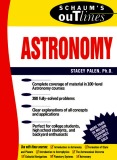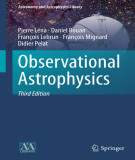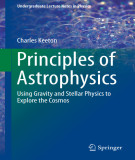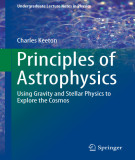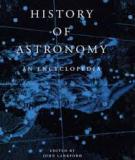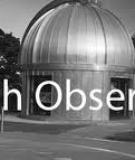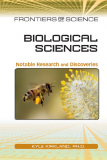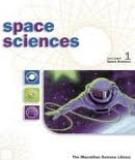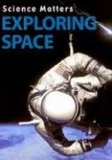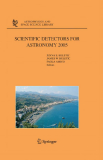
Astronomical systems
-
Ebook "Schaum's outline of Theory and problems of Astronomy" is to serve as a supplement to a basic astronomy text. Much of the material here is abbreviated, and students should use this book as a guide to the key concepts in modern astronomy, but not as an all-inclusive resource. Topics covered range from planetary astronomy to cosmology, in the modern context. The first chapter covers most of the phsyics required to obtain a basic understanding of astronomical phenomena.
 241p
241p  cotieubac1004
cotieubac1004
 15-03-2024
15-03-2024
 1
1
 0
0
 Download
Download
-
Ebook "Observational astrophysics (Third edition)" focuses on fundamental and sometimes practical limitations on the ultimate performance that an astronomical system may reach, rather than presenting particular systems in detail. Avoiding particulars, it covers the whole of the electromagnetic spectrum, and provides an introduction to the new forms of astronomy becoming possible with gravitational waves and neutrinos. It also treats numerical aspects of observational astrophysics: signal processing, astronomical databases and virtual observatories.
 724p
724p  tachieuhoa
tachieuhoa
 28-01-2024
28-01-2024
 6
6
 2
2
 Download
Download
-
Part 1 of ebook "Principles of astrophysics: Using gravity and stellar physics to explore the cosmos" provides readers with contents including: using gravity and motion to measure mass; celestial mechanics; gravitational one-body problem; gravitational two-body problem; tidal forces; gravitational three-body problem; extended mass distributions - spiral galaxies; n-body problem elliptical galaxies; bending of light by gravity;...
 256p
256p  dangsovu
dangsovu
 20-10-2023
20-10-2023
 3
3
 3
3
 Download
Download
-
Continued part 1, part 2 of ebook "Principles of astrophysics: Using gravity and stellar physics to explore the cosmos" provides readers with contents including: using stellar physics to explore the cosmos; planetary atmospheres; planetary temperatures; stellar atmospheres; nuclear fusion; stellar structure and evolution; stellar remnants; charting the universe with stars; star and planet formation;...
 188p
188p  dangsovu
dangsovu
 20-10-2023
20-10-2023
 5
5
 3
3
 Download
Download
-
An attempt has been made in these pages to trace the evolution of intellectual thought in the progress of astronomical discovery, and, by recognising the different points of view of the different ages, to give due credit even to the ancients. No one can expect, in a history of astronomy of limited size, to find a treatise on "practical" or on "theoretical astronomy," nor a complete "descriptive astronomy," and still less a book on "speculative astronomy.
 68p
68p  nhokheo9
nhokheo9
 06-05-2013
06-05-2013
 55
55
 1
1
 Download
Download
-
The Observatory carries out front-line astronomical research in three key areas of astrophysics, namely: Solar-System Science, Solar Physics, and Stellar and Galactic Astrophysics. Solar-System research en- compasses the dynamical structure, evolution and origin of objects in the inner and outer solar system and comparative planetology and meteor physics.
 22p
22p  mebachano
mebachano
 01-02-2013
01-02-2013
 55
55
 3
3
 Download
Download
-
Discovering what lies behind a hill or beyond a neighborhood can be as simple as taking a short walk. But curiosity and the urge to make new dis- coveries usually require people to undertake journeys much more adven- turesome than a short walk, and scientists oft en study realms far removed from everyday observation—sometimes even beyond the present means of travel or vision.
 0p
0p  cronus75
cronus75
 14-01-2013
14-01-2013
 46
46
 2
2
 Download
Download
-
A multitude of measurement units exist within astronomy, some of which are unique to the subject, causing discrepancies that are particularly apparent when astronomers collaborate with other disciplines in science and engineering. The International System of Units (SI) is based on a set of seven fundamental units from which other units may be derived. However, many astronomers are reluctant to drop their old and familiar systems. This handbook demonstrates the ease with which transformations from old units to SI units may be made.
 245p
245p  hotmoingay
hotmoingay
 04-01-2013
04-01-2013
 49
49
 5
5
 Download
Download
-
Four hundred years ago, the Universe changed. Or, at least, our perception of it did, thanks to Galileo Galilei’s scrutiny of the night sky with a telescope. Within a couple of years, his observations of the Moon, phases of Venus and satellites of Jupiter shattered the old Ptolemaic model of our Solar System. To the church’s dismay, Earth assumed its rightful place as one of several planets orbiting the Sun (see page 28). Marking Galileo’s anniversary, the International Year of Astronomy seeks to remind us of the humbling nature of gazing at the heavens.
 136p
136p  camchuong_1
camchuong_1
 11-12-2012
11-12-2012
 52
52
 3
3
 Download
Download
-
Astronomers have studied the heavens for more than two millennia, but in the twentieth century, humankind ventured off planet Earth into the dark vacuum void of space, forever changing our perspective of our home planet and on our relationship to the universe in which we reside. Our explorations of space—the final frontier in our niche in this solar system—first with satellites, then robotic probes, and finally with humans, have given rise to an extensive space industry that has a major influence on the economy and on our lives. In 1998, U.S.
 612p
612p  tom_123
tom_123
 14-11-2012
14-11-2012
 56
56
 7
7
 Download
Download
-
Humans have been exploring their world for thousands of years. People love to discover and learn about new places. Some of today's explorers are making exciting new discoveries in space. Many objects are found in the universe. These include asteroids, planets, moons, comets, and stars. Astronomers are scientists who study the objects in space. People who travel to space to learn about it are called astronauts.
 23p
23p  tom_123
tom_123
 14-11-2012
14-11-2012
 61
61
 3
3
 Download
Download
-
In 140 A.D. a Greek astronomer named Ptolemy wrote that the Earth was the center of the universe. He thought all the stars, the Sun, and the Moon revolved around it. This made sense because that is how things looked in the sky from Earth. We call Ptolemy’s theory the geocentric view. It is derived from geo (Earth) and centric (center). Astronomers believed the geocentric view for 1,500 years until 1543. The Heliocentric View About 500 years ago, Copernicus found that the Earth and other planets revolve around the Sun. His theory was published in1543.
 61p
61p  tom_123
tom_123
 14-11-2012
14-11-2012
 43
43
 4
4
 Download
Download
-
We present the proceedings from the workshop entitled Scientific Detectors for Astronomy 2005, a weeklong meeting held in Taormina, Sicily during 19-25 June 2005. This was the sixth workshop of this series, and the fourth with hardcover proceedings. By all measures, this workshop surpassed the previous meetings. The primary purpose of any technical meeting is the exchange of scientific and engineering information.
 805p
805p  tom_123
tom_123
 14-11-2012
14-11-2012
 52
52
 8
8
 Download
Download
-
This book is dedicated to the memory of Gisèle Mersch whose life ended prematurely in June 2002. Back in the 1970s, when few people were using them, Gisèle introduced me to the arcane secrets of then advanced multivariate statistical methodologies. I was already involved in more classical statistical studies undertaken at Paris Observatory with Jean Jung: developing and applying maximumlikelihood algorithms to stellar photometric and kinematic data in order to derive absolute luminosities, distances and velocities in the solar neighborhood....
 311p
311p  tom_123
tom_123
 14-11-2012
14-11-2012
 39
39
 5
5
 Download
Download
-
An attempt has been made in these pages to trace the evolution of intellectual thought in the progress of astronomical discovery, and, by recognising the different points of view of the different ages, to give due credit even to the ancients. No one can expect, in a history of astronomy of limited size, to find a treatise on “practical” or on “theoretical astronomy,” nor a complete “descriptive astronomy,” and still less a book on “speculative astronomy.
 97p
97p  lehuanss
lehuanss
 20-09-2012
20-09-2012
 98
98
 8
8
 Download
Download
CHỦ ĐỀ BẠN MUỐN TÌM








